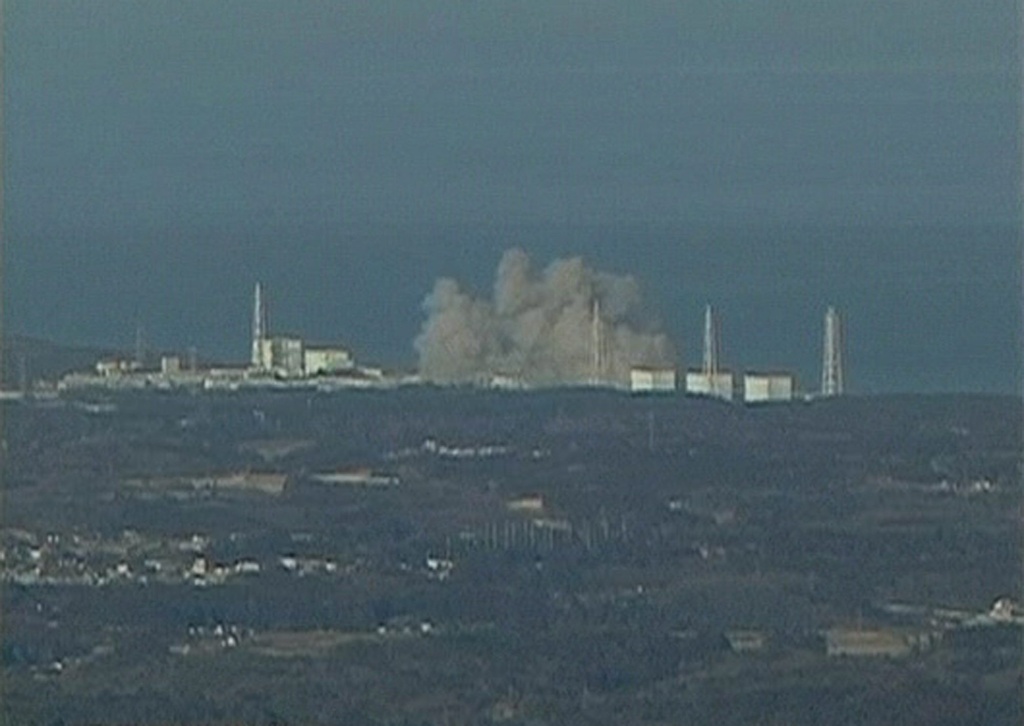
Nuclear fears grow amid “unprecedented” disaster

Switzerland has joined the international relief effort in Japan, sending a rescue team to help locate missing people and distribute aid.
Amid the start of relief efforts after Friday’s devastating earthquake and resulting tsunami, there were concerns about an explosion at a nuclear plant. A Swiss nuclear expert gives swissinfo.ch his view on how the situation is being tackled.
Japan suffered its biggest earthquake on record on Friday – 8.9 magnitude – which sent a 10-metre high tsunami through towns and cities across the northeast coast. More than 1,700 are believed dead or missing, Kyodo news agency reported, and around 300,000 people have been evacuated nationwide.
The Swiss rescue team, which includes experts in natural disasters, water, medicine and engineering, were due to arrive in Japan on Sunday. Two specialists from the Swiss Humanitarian Aid Unit in Beijing were also flying into the country on Saturday night.
Toni Frisch, head of the Swiss Humanitarian Aid Unit, told Swiss radio that the Japanese disaster needed specialists as it was bigger than the “standard rescue operation” that follows an earthquake.
The Swiss team includes 25 rescuers and nine sniffer dogs. The group will split into two, with some searching for victims underneath the debris of the tsunami and others “clarifying the most urgent needs, including in the environment, helping coordination with the authorities, and putting the first aid measures in place”.
Around 45 countries have offered their help to Japan and the United Nations is sending a group to coordinate work by the international community. A spokesman said four teams from the United States, New Zealand, Australia and South Korea were already on their way.
Nuclear fears
Prime Minister Naoto Kan on Saturday described the situation as an “unprecedented national disaster”.
Alongside the devastation caused by the earthquake and tsunami, Japan has been tackling fears of meltdowns at nuclear power plants.
Of Japan’s 55 nuclear plants, 11 were affected by the events and several had cooling problems. Most worrying, an explosion which blew the roof off the Fukushima Daiichi Number 1 nuclear power plant 240km north of Tokyo on Saturday. A 20km evacuation zone was being enforced.
Chief Cabinet Secretary Yukio Edano confirmed there was an explosion and radiation leak, but not inside the reactor container. He said that due to the falling level of cooling water, hydrogen was generated and that leaked to the space between the building and the container. The explosion happened when the hydrogen mixed with oxygen there.
The government plans to pour sea water into the leaking reactor to cool it down and reduce pressure in the unit. It was expected to take up to ten hours to fill the reactor core with sea water and around ten days to complete the process.
Bruno Pellaud, past-president of the Swiss Nuclear Forum and a former deputy head of the International Atomic Energy Agency, told swissinfo.ch it seemed a “very reasonable solution” considering the plant is located by the water.
“The whole issue from the safety point of view is to ensure that there is cooling water going in that reactor building.” The authorities also had to ensure that the internal vessel housing the reactor was in a good condition, he said. It then had to be dismantled.
Questions raised
Japanese authorities have told the UN atomic watchdog they are making preparations to distribute iodine to people living near nuclear power plants affected by the earthquake. Iodine can be used to help protect the body from radioactive exposure.
Experts have said pictures of mist above the Fukushima plant suggested only small amounts of radiation had been expelled as part of measures to ensure its stability.
Pellaud said reported levels of radioactivity around the plant were “significant”, but added: “If things get under control overnight, then I think the radiological consequences of the events today will not be too severe. However there are a number of questions that have been raised technically.”
Among them, the 40-year-old square reactor building, which was not built in the sturdier half-sphere shape used in other Japanese nuclear plants that have withstood various earthquakes without damage.
“Here is maybe the case of a facility built in the 1970s which could be improved, or I think the facility will be decommissioned,” Pellaud said.
“It shows that proper measures have to be taken. I think in Japan in general they have been taken and in Switzerland they are being regularly revised to make sure that whatever degree of intensity of earthquake is being taken as a basis to make a facility safe, that this is adequate.”
While the German government was set to discuss the Japanese situation, there were no plans yet for the Swiss cabinet to meet. The Swiss government is being kept up-to-date on the Japanese situation by the Swiss Federal Nuclear Safety Inspectorate, which is following the accident.
The Swiss Federal Energy Office said it was too early to draw conclusions about safety, nor was it possible to evaluate the consequences on Swiss energy policies.
The 8.9 magnitude earthquake struck northeast Japan on March 11, setting off a 10-metre high tsunami, with waves sweeping away homes, crops, vehicles and submerging farmland.
More than 1,700 people are believed dead or missing from the quake and tsunami, Kyodo news agency says.
There have been radiation leaks from a damaged nuclear plant after an explosion blew off the roof, raising fears of a meltdown at the facility north of Tokyo.
Jiji news agency says three workers suffered radiation exposure near the Fukushima nuclear plant.
The nuclear safety agency rated the incident a 4 on the 1 to 7 International Nuclear and Radiological Event Scale, less serious than Three Mile Island, which was a 5, and Chernobyl at 7.
The plant operator plans to fill the leaking reactor with sea water to cool it down and reduce pressure in the unit.
The Bank of Japan will hold a policy meeting on March 14 and announce a decision that same day. The central bank vowed to do the utmost to ensure financial market stability.
Total insured loss could be up to $15 billion, equity analysts covering the industry say.

In compliance with the JTI standards
More: SWI swissinfo.ch certified by the Journalism Trust Initiative






























You can find an overview of ongoing debates with our journalists here . Please join us!
If you want to start a conversation about a topic raised in this article or want to report factual errors, email us at english@swissinfo.ch.